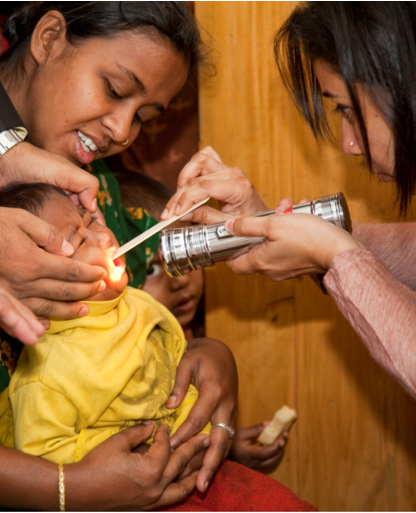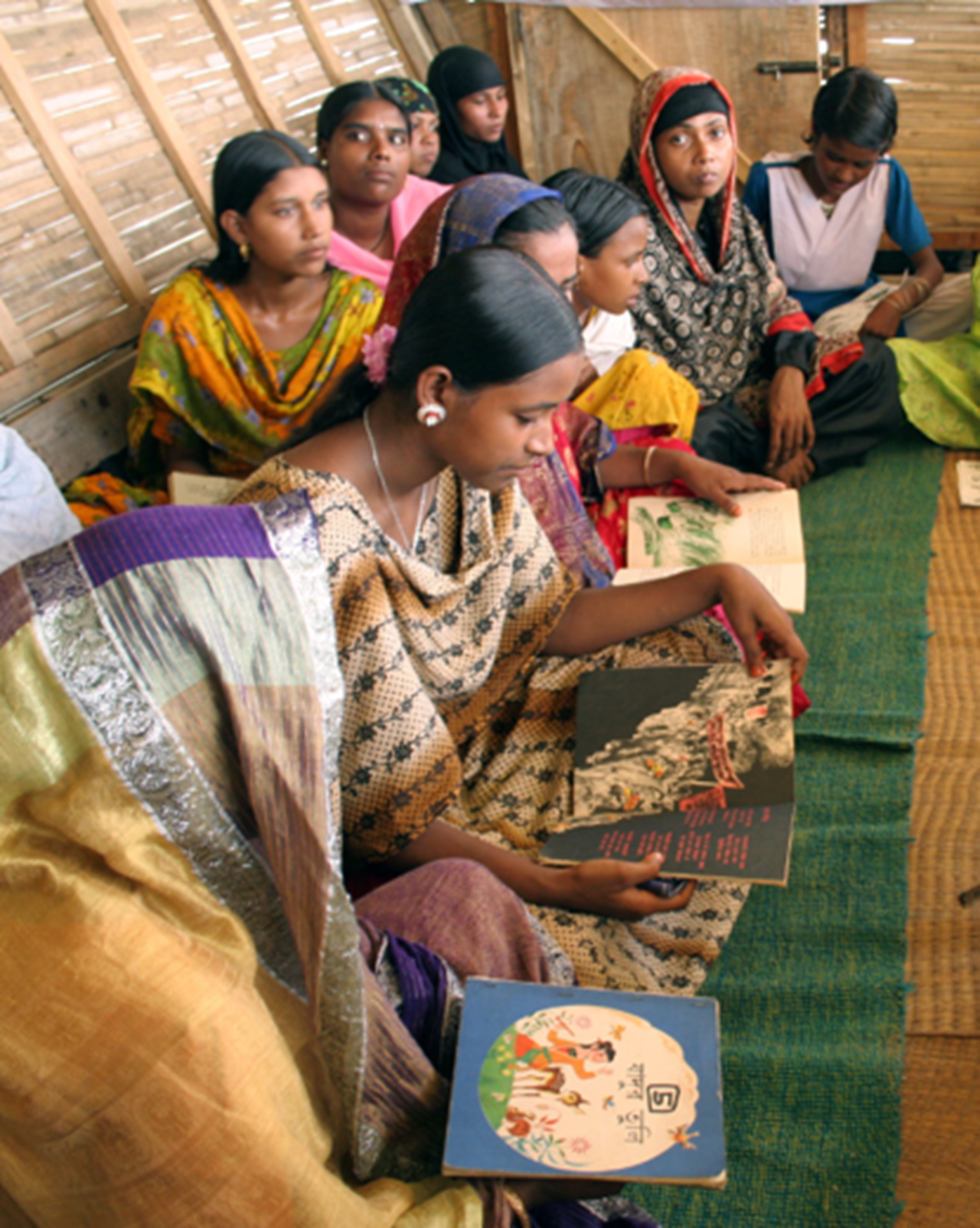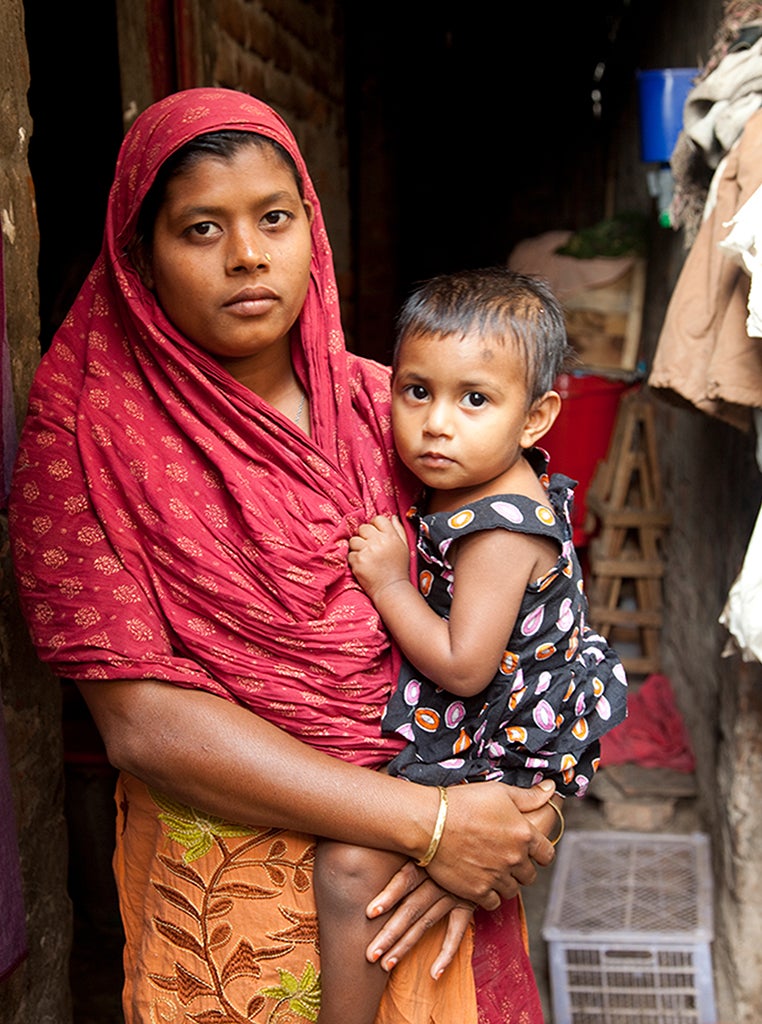Under-Five Mortality Reduction in Bangladesh
From 2000 to 2015, Bangladesh's under-five mortality rate decreased by 56 percent.
CONTENTS
Quick Downloads

Key Insights
Through a combination of evidence-based interventions and effective implementation strategies, Bangladesh has achieved significant reduction in under-five mortality, providing helpful lessons for other countries looking to replicate their success.
A key underpinning of Bangladesh’s success is the effective collaboration between the national government and local and international non-governmental organizations (NGOs). In addition, Bangladesh knew the importance of using data and research, community-level interventions, and a focus on equity to improve access for all populations. Finally, a strong commitment to women’s empowerment initiatives enabled greater impact of interventions and drove further improvements in women’s and children’s health.
High levels of collaboration between the national government and non-governmental organizations (NGOs)
Bangladesh’s campaigns against U5M were aided by a well-developed national NGO sector, which played a critical role in research and implementation
One of the most distinctive features of Bangladesh’s U5M efforts is the prominence of non-governmental organizations (NGOs), both homegrown and international, in a broad range of capacities. While other countries may have comparably large NGO sectors, Bangladesh is remarkable in that it is home to several highly capable domestic organizations, which the government has drawn upon for research and technical expertise. The most notable of these is BRAC (originally the Bangladesh Rehabilitation Assistance Committee, now known only by its initials), which is one of the largest NGOs in the world.
For example, the government partnered with NGOs in implementing the Bangladesh Integrated Nutrition Program and the National Nutrition Program, and NGOs played a vital role in the distribution of bednets to prevent malaria.

Emphasis on community-level interventions
A large, diverse, and highly empowered cadre of community health workers (CHWs) helped carry out these interventions

An especially vivid example of government-NGO collaboration against U5M is the development and deployment of Bangladesh’s community health workers (CHWs). Uniquely among U5M exemplar nations, both government and NGOs iterated on Bangladesh’s CHW model – sometimes in collaboration and sometimes in parallel. One illustration of this was Bangladesh’s campaign to improve antenatal care (ANC) and access to skilled birth attendants. The government achieved this aim through a variety of CHW programs, some government-led and some supervised by NGOs. Through these programs, Bangladesh was able to achieve high levels of ANC and improved access to skilled birth attendants.
Consistent usage of data, research, and testing
These helped with the development of evidence-based interventions (EBIs), and provided a basis for adapting those interventions in response to new findings.
An emphasis on the collection and usage of empirical evidence was a consistent feature of Bangladesh’s U5M efforts. In addition to using data to monitor and evaluate interventions, the government and its NGO partners employed data for decision-making at several junctures. Data on disease burden and coverage gaps played a significant role in Bangladesh’s vaccine-introduction policies. For example, the country’s decision to set the upper age limit for measles vaccination at ten years was based on data showing that 89 percent of all serologically confirmed cases of measles were among children younger than ten.
Bangladesh benefited from strong local research institutions such as the International Centre for Diarrhoeal Disease Research, Bangladesh (ICDDR,B), whose demographic surveillance sites produced such data. Bangladesh was successful in leveraging local research institutions to heavily inform and influence government and NGO policies and programs.

Focus on equity in the implementation of U5M interventions
This was seen in the provision of low-cost treatments, as well as in the decision to begin phased rollouts of certain major programs in the highest-need areas of the country.

While Bangladesh remains a nation beset by some profound imbalances in health-care services and outcomes, it nonetheless demonstrated a notable commitment to greater equity in U5M interventions at several points during the study period. One major example was in the phased rollout of the Integrated Management of Childhood Illness (IMCI) program, in which Bangladesh achieved greater impacts by targeting areas where the need was most acute.
A national steering committee developed a plan for a phased national scale-up of the program, beginning in districts with the highest U5M rates followed by those with lower rates.
Where possible, the government sought to offer free or low-cost distribution of treatments to ensure access across income levels. This could be seen in the free distribution of ORS packets as part of the National Oral Rehydration Project, the free distribution of insecticide-treated nets, free test-to-treat malaria programs, and the subsidization of zinc supplements.
Strong commitment to women’s empowerment initiatives
These helped generate meaningful advances in women’s and children’s health across a society where females still face significant limitations and disadvantages.
According to interviewees – and international studies such as Success Factors for Women's and Children's Health – women’s empowerment was a crucial facilitator of U5M reduction in Bangladesh. Efforts that contributed to gender-equity improvements and are especially relevant to child health included interventions in family planning, education, and microcredit finance.
The rise in access to family planning and decline in fertility rates were important elements of a broader theme in Bangladesh’s efforts to reduce U5M – a greater empowerment of women in a traditionally conservative society. This theme of empowerment manifested itself across several areas, including increased availability of microcredit financing and heightened school enrollment levels.


Under-Five Mortality Reduction in Bangladesh

Ask an Expert
Our team and partners are available to answer questions that clarify our research, insights, methodology, and conclusions.
